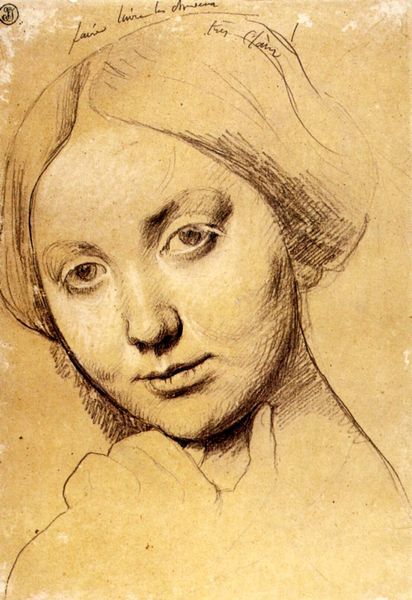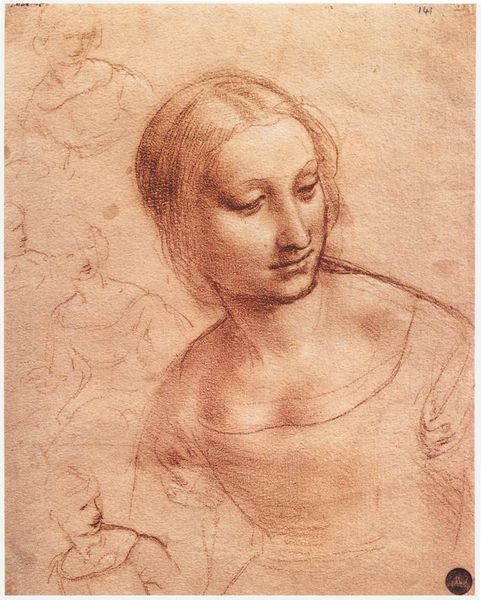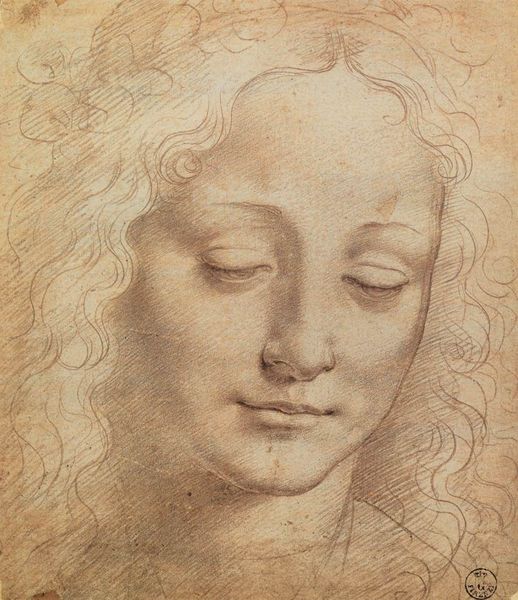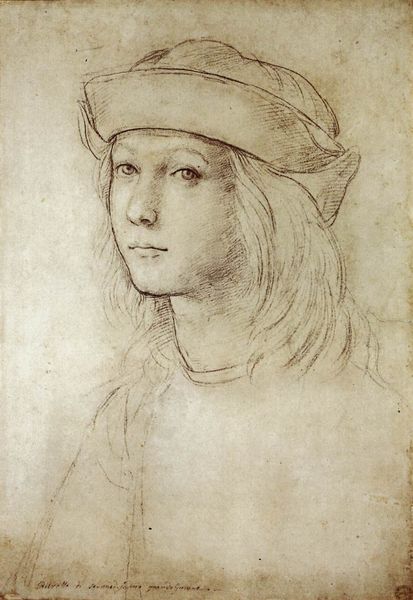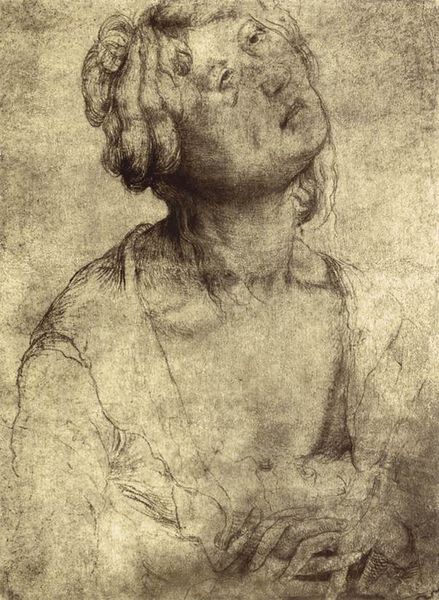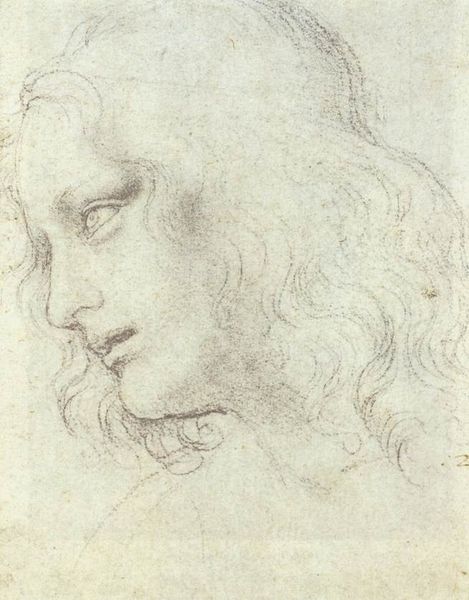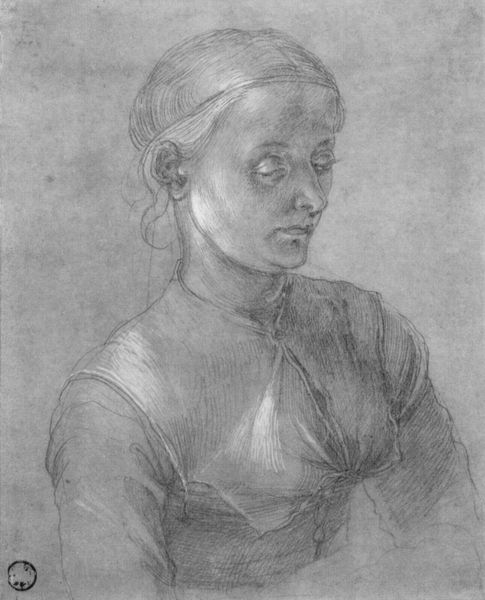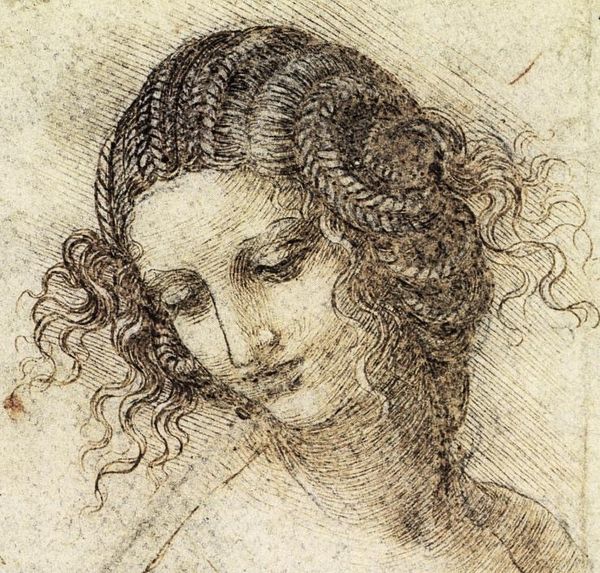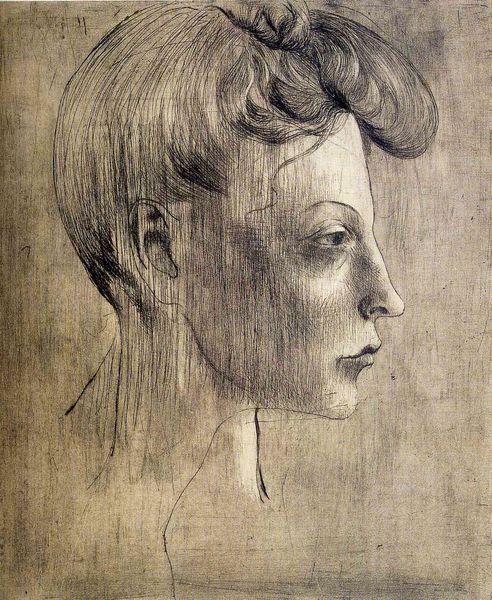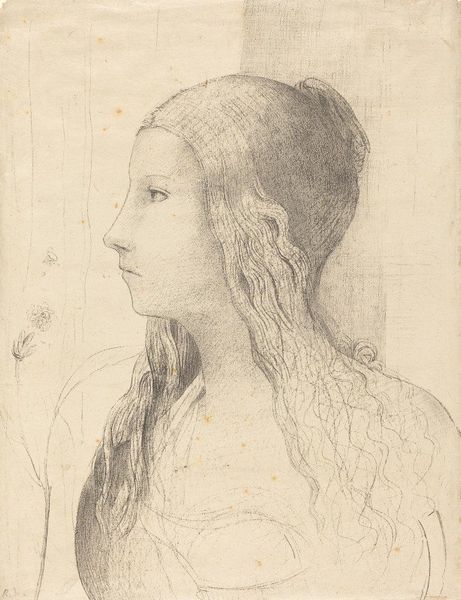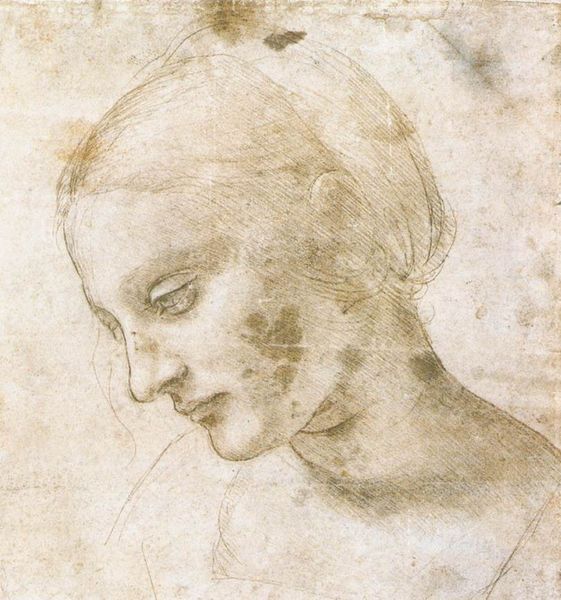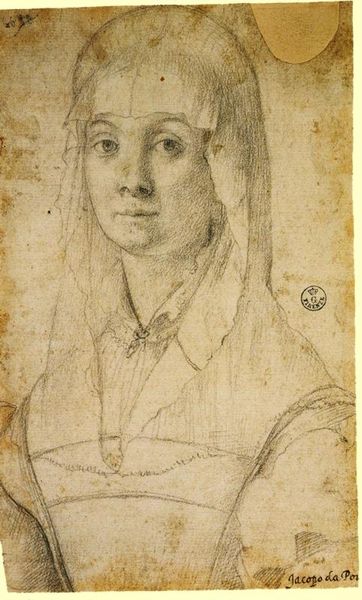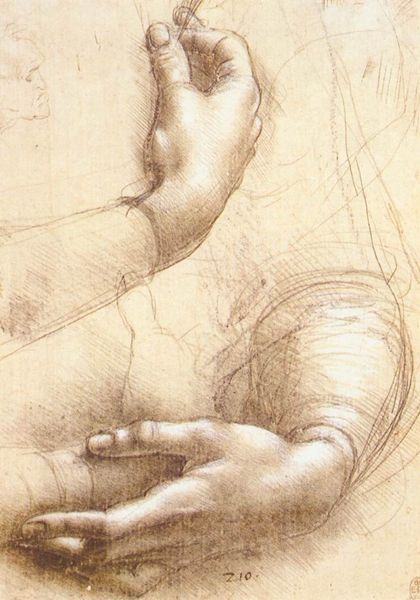
drawing, pencil
#
portrait
#
drawing
#
facial expression drawing
#
head
#
face
#
pencil sketch
#
charcoal drawing
#
11_renaissance
#
portrait reference
#
portrait head and shoulder
#
sketch
#
pencil
#
animal drawing portrait
#
portrait drawing
#
facial study
#
facial portrait
#
italian-renaissance
#
forehead
#
female-portraits
#
digital portrait
Dimensions: 18.1 x 15.9 cm
Copyright: Public domain
Art Historian: We are now standing before Leonardo da Vinci’s “Head of a girl,” a drawing believed to have been created around 1483. Art Historian: My goodness, what an intriguing gaze. It’s a gentle expression, but almost wary, like she's about to share a secret. Art Historian: Indeed. This piece, rendered in pencil, provides an intimate glimpse into da Vinci’s preparation for a larger work, perhaps a study for an angel or a Madonna. It offers a unique lens through which we can examine Renaissance ideals of beauty and representation. Art Historian: You can certainly see a precursor to those idealized faces, but what really strikes me is the contrast. Her features are soft, almost ethereal, yet the unfinished quality gives her an incredibly human vulnerability. Those lines, sketched so delicately, speak to an internal life as much as a physical likeness. Art Historian: Absolutely. Remember that portraiture during the Renaissance was profoundly connected to status and power. But drawings such as this, of women like this, complicate our understanding. Were these portraits meant for public display, or did they have another more private function, as practice or expressions of something more profound? Art Historian: It’s those private emotions that are so powerful. Look at how her head is tilted, her eyes just slightly averted. There's a profound feeling of inner knowing. It hints at the archetypal feminine – wisdom, intuition. This drawing speaks volumes about da Vinci's sensitivity towards women, I would argue. Art Historian: Or it could simply be an aesthetic study. But you raise an interesting point: what we interpret as inherent feminine qualities are often socio-culturally constructed notions projected onto images by the dominant artistic, patriarchal system. How can we disentangle Da Vinci's intention from the layers of meaning attributed over centuries? Art Historian: I think the power of images is that they contain all those layers. This study encapsulates Renaissance beauty but also transmits universal qualities: introspection, mystery, and grace that transcend specific periods or intentions. Art Historian: It certainly is a compelling piece to contemplate. These close studies that are left to us open up different perspectives and different voices regarding Da Vinci’s practices. Art Historian: Absolutely. Gazing at that single drawing elicits so many conversations and possibilities around it. That’s what makes it so powerful even now.
Comments
No comments
Be the first to comment and join the conversation on the ultimate creative platform.
